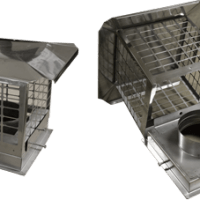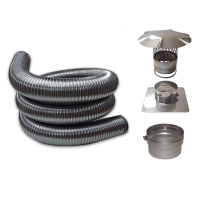Cleaning a Flexible Chimney Liner
When cleaning a flexible chimney liner you need to use special care and tools. You cannot use the standard wire brush you would use for a standard terra-cotta lined chimney. If you use a wire brush on a flexible chimney liner it will void the warranty and puncture holes in the liner.
To effectively and properly clean a flexible chimney liner you need to use a plastic or polyurethane style chimney brush. This style of brush is softer than the standard wire brushes and will not damage the flexible chimney liner. They come in all the standard sizes that chimney liners come in. You would be best cleaning the chimney from the top. This will ensure that you can effectively clean the cap and it’s screening. Also you can do a visual inspection of the liner to make sure everything is in sound condition.
If you are cleaning a flexible chimney liner that vents a wood or coal burning appliance it is recommended to be cleaned at least once a year. Wood that is too wet can block up a chimney or the screening on the cap in matter of days. So it will not hurt to clean your flexible chimney liner every month during the burning season.
Be sure you use the proper brush when cleaning a flexible chimney liner.






